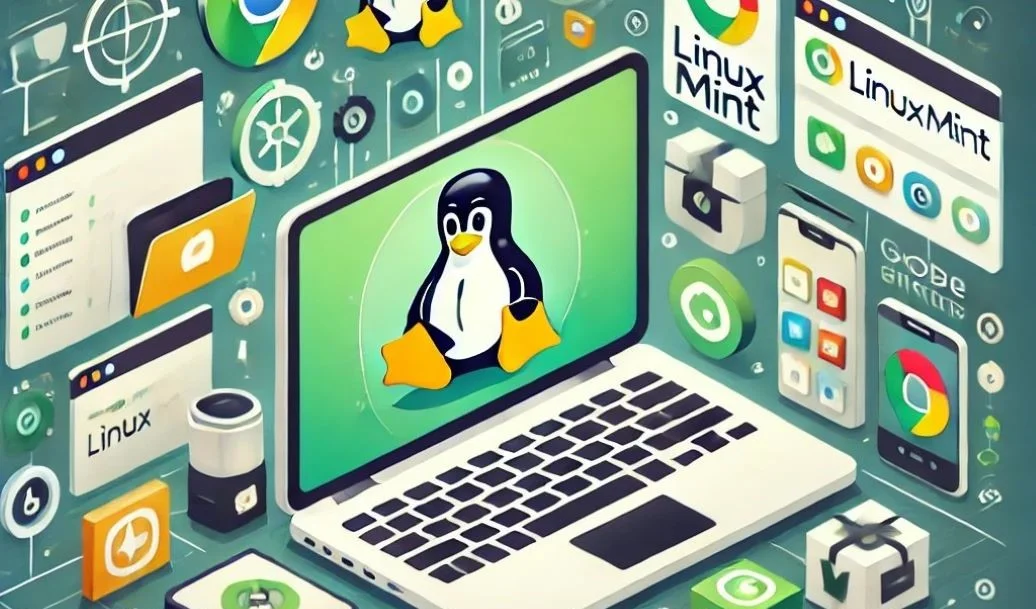
About Linux Mint
Linux Mint is a user-friendly, open-source operating system based on Ubuntu and Debian, designed to make Linux accessible to both beginners and experienced users. With a reputation for stability, simplicity, and a familiar desktop layout, Linux Mint provides an environment that feels natural for those transitioning from other operating systems, like Windows or macOS. The OS includes the Cinnamon, MATE, and Xfce desktop environments, offering flexibility and customization options to suit various user needs and hardware capabilities.
Since its release in 2006, Linux Mint has grown to be one of the most widely used Linux distributions due to its performance, ease of use, and rich feature set. It includes many essential applications out-of-the-box, as well as powerful tools such as the Software Manager, Update Manager, and Nemo File Manager, which we'll discuss below.
Why You Should Use Linux Mint
Linux Mint is ideal for users looking for a stable and reliable operating system without the need for extensive technical knowledge. Here are some reasons why it’s a great choice:
- Ease of Use: Linux Mint’s user interface is intuitive and beginner-friendly, making it perfect for those switching from Windows. With a start menu, taskbar, and familiar icons, the learning curve is minimal.
- Regular Updates and Security: Linux Mint’s Update Manager ensures your system stays updated with the latest features and security patches. This proactive approach makes it a highly secure environment.
- Vast Software Library: As a Debian-based OS, Linux Mint has access to an extensive software repository, allowing you to install thousands of applications, including proprietary software, through the Software Manager.
- Community Support: Linux Mint has a dedicated community and a wealth of online resources, making it easy to find support, tutorials, and tips to enhance your experience.
Now that you know a bit about Linux Mint and its benefits, let’s get into the essential steps you should take after installation.
1. Set Up Nemo File Manager to Prevent Permanent Deletions
One of the first tweaks you should make in Linux Mint is with the Nemo File Manager. By default, pressing the 'Delete' key permanently deletes files, which can be risky. To avoid this, let’s set up Nemo to move deleted files to the Trash instead. This small adjustment can save you from accidentally losing important files.
Here’s how to adjust your settings:
- Open Nemo File Manager.
- Click on Edit in the top menu and select Preferences.
- In the Preferences window, go to the Behavior tab.
- Uncheck these two options:
- 'Bypass the Trash when the Delete Key is pressed'
- 'Include a delete command that bypasses the Trash'
- Check these two options:
- 'Ask before moving files to Trash'
- 'Ask before emptying the Trash or deleting files'
Now, whenever you press 'Delete', files will go to the Trash instead of being permanently deleted. A simple change, but one that can prevent many headaches!
2. Install Google Chrome on Linux Mint
While Linux Mint comes with Firefox by default, some users prefer Google Chrome for its additional features and extensions. Here’s the easiest way to install Chrome on your system.
Step-by-step guide:
- Open Firefox.
- Head to the Google Chrome website by typing “Google Chrome download” into the search bar or visiting google.com/chrome.
- Click Download Chrome and choose the .deb package option (suitable for Debian-based distributions like Linux Mint).
- After downloading, double-click the .deb file to open it in the Software Manager.
- Click Install to finish the process.
Now you have Google Chrome installed, offering you an alternative browsing experience with access to your favorite extensions!
3. Install Web Apps for a Seamless Experience
Linux Mint allows you to install web apps, which work like native applications. This is ideal for frequently used apps like WhatsApp or Google Keep, as you can open them directly from your application menu.
Here’s how to install a web app:
- Open Google Chrome.
- Go to the website you want to install as a web app. For instance, Google Keep.
- Choose one of these options:
- Option 1: Click on the Install App button (often in the address bar) and confirm by clicking Install in the pop-up.
- Option 2: Click on the three-dot menu in the top-right corner, go to More Tools, and select Create Shortcut. Check Open as window, then click Create.
Your new web app, like Google Keep, will now appear in your application menu as a standalone app. Repeat these steps to install other web apps, such as Gmail or WhatsApp, and streamline your workflow.
Conclusion
Now that you’ve adjusted your file manager settings, installed Google Chrome, and added web apps, you’re ready to make the most of your Linux Mint system! These small tweaks make a big difference, enhancing usability, productivity, and security. Enjoy your journey with Linux Mint, and check back at Computer Arena for more guides, tips, and tricks!
Linux Mint offers everything you need for a reliable, user-friendly experience, and with these essential steps, you’re all set for a great start.
